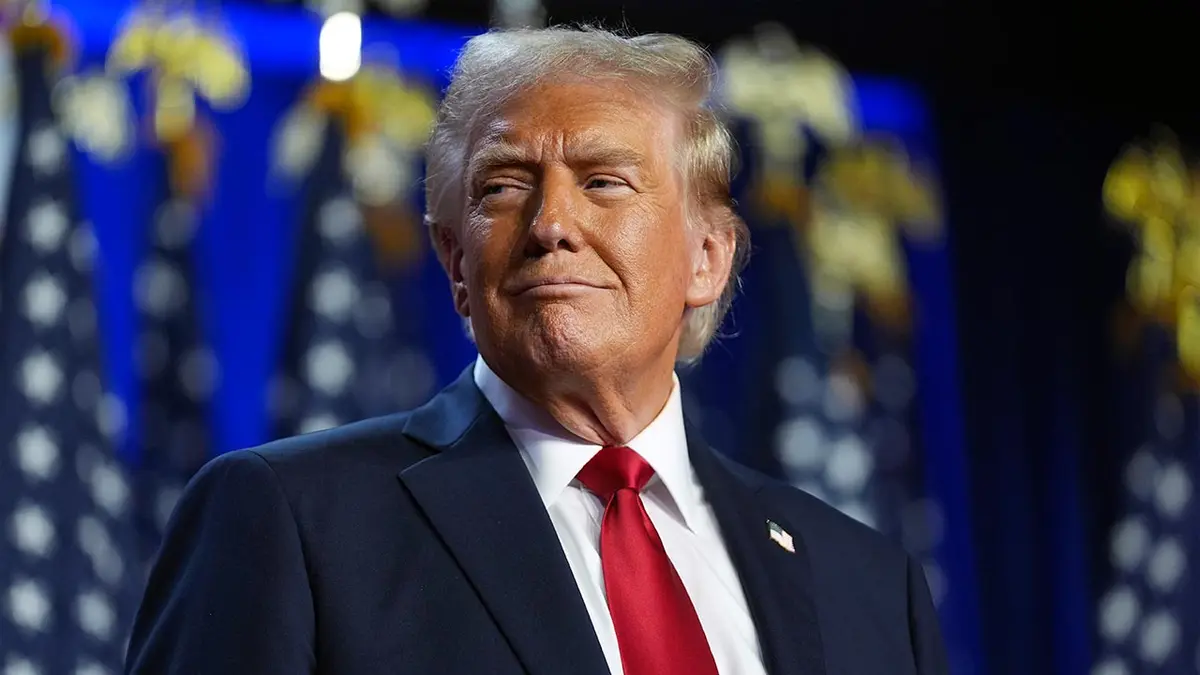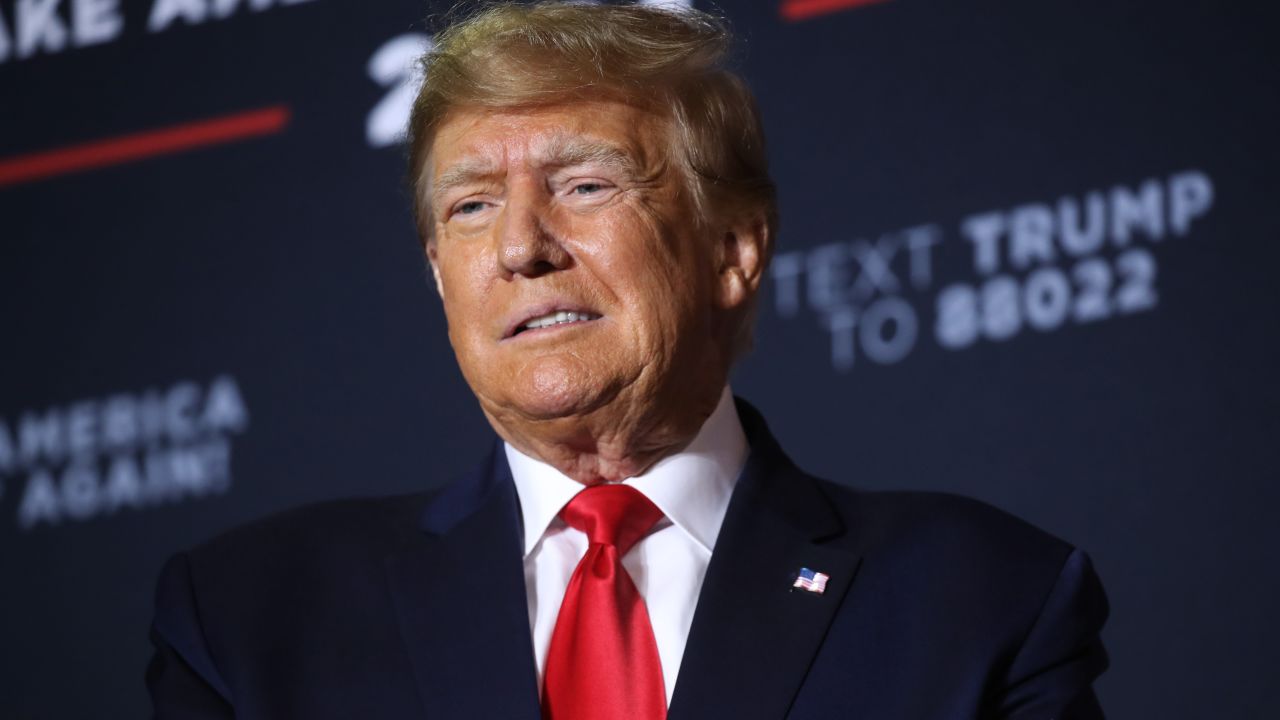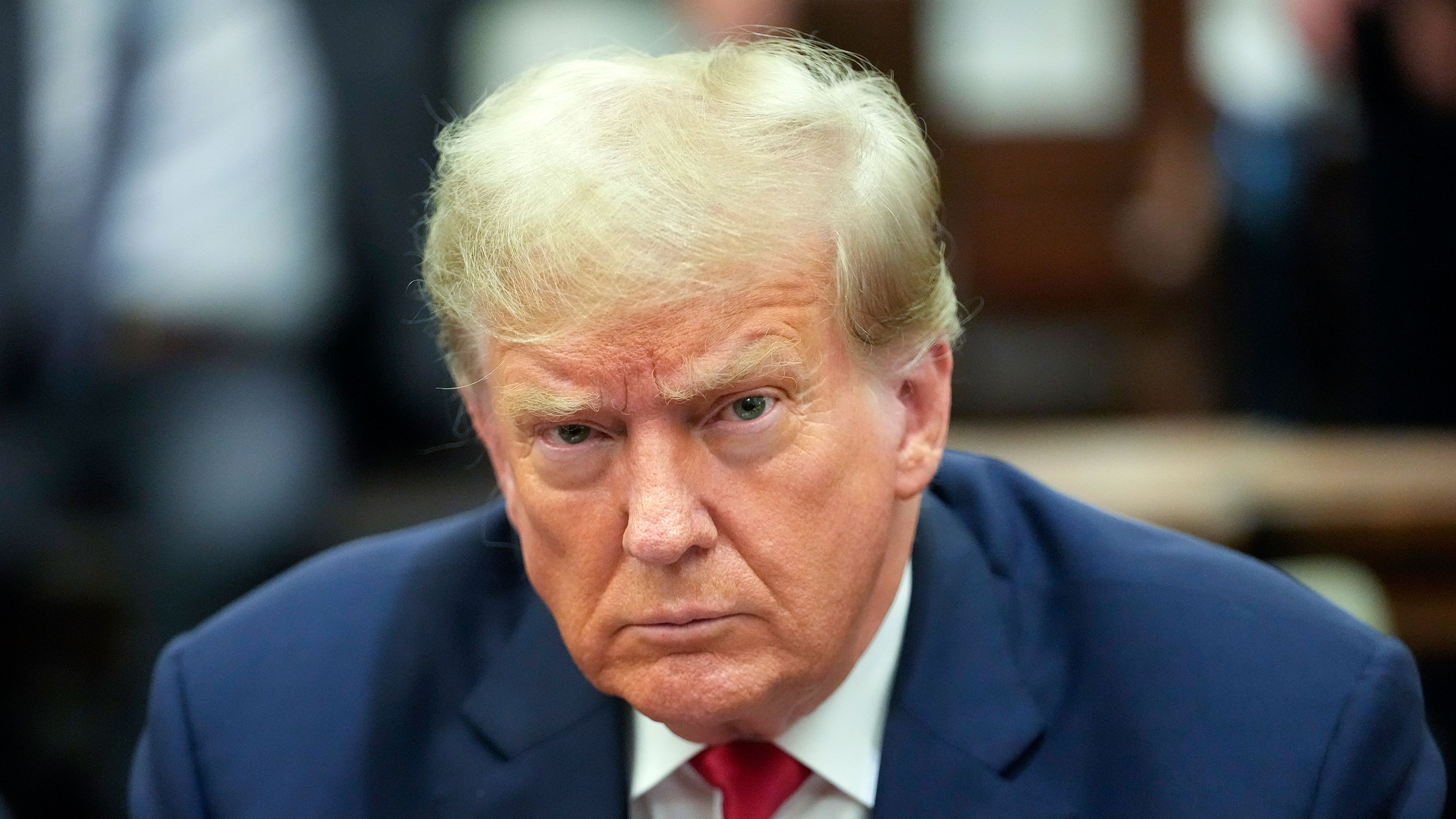Trump Segregated Facilities - A Look At Public Discourse
There's been quite a bit of talk, for some time now, about how different groups of people interact within our shared spaces, especially during certain periods of political change. Sometimes, these discussions take on a very serious tone, bringing up ideas about whether people are being kept apart or treated differently based on who they are. It's a subject that can feel a bit sensitive, and it often gets people thinking about fairness and how society organizes itself. So, when people started talking about "trump segregated facilities," it really got folks wondering what exactly was being referred to.
The phrase itself, "trump segregated facilities," pops up in various conversations, often bringing with it a sense of concern or, you know, a call for closer inspection. It's not always clear what specific places or policies are being pointed to when someone uses that particular wording, which can make the whole discussion a little bit confusing for folks just trying to keep up. People often hear things through news reports, social media posts, or just from friends talking, and these bits of information can sometimes leave us with more questions than answers about what's truly going on.
What we're looking at here isn't necessarily about proving or disproving a single, specific instance, but more about exploring the public conversation that took shape around this idea. It's about understanding why people started using this phrase, what concerns they were trying to voice, and how those concerns fit into the broader political happenings of a recent past administration. We're going to take a closer look at the sort of chatter that surrounded these ideas, and what it might tell us about how people perceived certain actions and policies.
Table of Contents
- Donald J. Trump - A Public Figure's Journey
- What Were the Conversations Around Trump Segregated Facilities?
- How Did Policies Affect Perceptions of Trump Segregated Facilities?
- Examining the Language - Trump Segregated Facilities in the Media
- Were There Specific Instances Related to Trump Segregated Facilities?
- The Broader Dialogue - Beyond Trump Segregated Facilities
- What Public Responses Emerged Concerning Trump Segregated Facilities?
- Looking Back - The Legacy of Discussion Around Trump Segregated Facilities
Donald J. Trump - A Public Figure's Journey
Donald J. Trump has, in a way, lived a life that's been very much in the public eye for a good long while. Before stepping into the world of politics, he was known for his work in real estate development, putting his name on buildings and various businesses. He also became quite a familiar face on television, which really gave him a broad reach and made him a household name for many. His path to the presidency was, you know, quite a departure from the typical political career, drawing a lot of attention and sparking many conversations across the country. He certainly made his presence felt in a very big way, changing the usual flow of political discussion.
His time in the White House, from 2017 to 2021, was marked by a series of bold actions and, well, often rather direct communication. He frequently used social media to share his thoughts, which was a new approach for a leader of his position, and it definitely kept people talking. During his presidency, there were many discussions about how his administration approached various social issues, and these conversations sometimes touched on how different groups of people were being treated or affected by government decisions. This, in some respects, led to the kind of public discourse we are exploring today.
Personal Details and Bio Data
| Full Name | Donald John Trump |
| Birth Date | June 14, 1946 |
| Birthplace | Queens, New York |
| Education | Wharton School of the University of Pennsylvania |
| Primary Profession | Businessman, Television Personality |
| Political Affiliation | Republican |
| Presidential Term | 2017-2021 |
What Were the Conversations Around Trump Segregated Facilities?
The phrase "trump segregated facilities" certainly caught the ear of many people during his time as president. It wasn't always about a literal building with signs saying "segregated," but rather a way people talked about certain policies or actions that they felt created divisions or separated groups of people. For instance, there were discussions around immigration policies, particularly those that involved holding people at the border or processing asylum seekers in ways that seemed to keep families or different groups apart. So, it's almost like the term became a shorthand for a broader set of concerns about fairness and equal treatment for everyone.
Public commentary, too, often focused on how different communities were affected by the administration's decisions. People would voice worries about whether certain rules or official statements might, in a way, lead to people feeling isolated or pushed into separate categories. This kind of talk wasn't just limited to one area; it popped up when discussing housing, or even when considering how certain public services might be distributed. It’s pretty clear that these conversations reflected a deep concern among some parts of the public about social fairness.
The media, for its part, played a significant role in bringing these discussions to a wider audience. News reports would highlight situations that some critics described as leading to "segregation," even if the administration itself didn't use that word. These reports, you know, would often spark further debate among citizens, on social media, and in everyday conversations. It really shows how a particular choice of words, even if it's a descriptor used by critics, can become a very powerful way to frame a public issue.
How Did Policies Affect Perceptions of Trump Segregated Facilities?
When we look at how policies played into the idea of "trump segregated facilities," it's worth considering a few key areas that drew considerable public scrutiny. One big topic was immigration enforcement, particularly actions at the nation's borders. Policies that led to the separation of children from their parents, for example, caused a huge outcry. While not "segregated facilities" in the historical sense of racial separation, these situations certainly involved separating people into different groups or locations, which, in some respects, contributed to the public using such strong language.
Beyond immigration, there were also conversations about how certain administrative rules might impact housing opportunities or access to public services for different groups. Critics would sometimes point to changes in regulations that, they argued, could potentially lead to less diverse communities or create barriers for some people trying to find a place to live. This sort of discussion, you know, often centered on whether policies, even if not explicitly discriminatory, had an effect that seemed to divide people along various lines. It was about the perceived outcome, rather than just the stated intent.
The way official communications were handled also played a part. Sometimes, the language used by officials or in public statements was seen by some as contributing to a climate where certain groups felt targeted or set apart. This perception, whether intended or not, could certainly fuel the idea that the administration's actions were, perhaps, leading to a kind of social separation, which some then described using terms like "trump segregated facilities." It highlights how important words are in shaping public feeling.
Examining the Language - Trump Segregated Facilities in the Media
The words people choose to describe events and policies can really shape how we all think about them, and the phrase "trump segregated facilities" is a pretty good example of this. When this term appeared in news stories or on social media, it wasn't always a direct quote from the administration itself. Rather, it was often used by critics, commentators, or advocacy groups to describe situations they felt were creating divisions or separating people. This choice of words, you know, carried a lot of historical weight, immediately bringing to mind past injustices.
Think about how a news report might describe a particular detention center or a temporary holding area for people seeking asylum. While the official term might be "processing center," some journalists or human rights organizations might choose to describe the conditions or the outcome of policies as leading to "segregation" because of the way people were grouped or kept apart. This is that, a way of communicating a strong sense of concern about what was happening. It’s about the emotional and historical resonance of the words.
The media's role here was, in a way, to echo and amplify these concerns. When a prominent news outlet or a widely followed commentator used the phrase, it helped to cement it in the public conversation. This meant that even if the administration never used the term, the public heard it frequently in relation to the administration's actions. It truly shows how a phrase can gain traction and become a focal point for public debate, especially when it touches on deeply felt societal values.
Were There Specific Instances Related to Trump Segregated Facilities?
When people asked about specific instances related to "trump segregated facilities," they were often thinking about widely reported events that involved separating people. Perhaps the most prominent example that fueled this kind of talk was the policy of separating families at the U.S. southern border. This policy, which saw children taken from their parents and held in different locations, generated widespread condemnation and, you know, sparked a very intense public discussion about human rights and the treatment of vulnerable individuals. While these were not "segregated facilities" in the traditional sense of racial segregation, the act of separating families into different holding areas certainly aligned with the concept of people being kept apart.
There were also discussions around the conditions within certain detention centers, where people from different backgrounds or legal statuses might be housed separately. Critics would sometimes highlight how these arrangements, or the general conditions within these places, contributed to a sense of isolation or unequal treatment. It’s important to remember that these were allegations or observations made by those outside the administration, reflecting their concerns about how people were being managed and where they were being held. So, it was more about the perceived impact of policies on individuals.
These situations, while perhaps not fitting a strict historical definition of "segregated facilities," definitely contributed to the broader public perception that the administration's policies were, in some respects, leading to divisions among people. The intense public reaction to these events meant that the phrase, or similar ideas of separation, became a powerful way for people to voice their disapproval and call for changes in policy. It really underscores how public sentiment can shape the narrative around governmental actions.
The Broader Dialogue - Beyond Trump Segregated Facilities
The conversations about "trump segregated facilities" didn't happen in a vacuum; they were part of a much larger, ongoing dialogue in the nation about fairness, belonging, and how different groups of people are treated. This bigger discussion has, you know, been around for a long time, stretching back through history, and it often comes to the forefront during periods of significant social or political change. The specific concerns raised during the Trump administration fit into this broader historical pattern of people questioning whether society is truly offering equal opportunities and respect to everyone.
These discussions often touch on fundamental questions about what it means to be an inclusive society. People might ask whether policies are bringing people together or pushing them apart, and whether everyone has the same chances to thrive, regardless of their background. It’s, in a way, a constant check on the nation's values and how they are being lived out in practice. The focus on "segregated facilities" during this period was, perhaps, a specific manifestation of these deeper, ongoing societal questions.
This broader dialogue also involves how different communities perceive their place within the nation. When discussions about separation or unequal treatment arise, it can really highlight existing tensions or long-standing grievances that various groups might hold. So, the conversations around "trump segregated facilities" weren't just about specific policies; they were also about the feelings and experiences of people who felt that their rights or their dignity were being challenged. It shows how deeply personal these political discussions can become for many.
What Public Responses Emerged Concerning Trump Segregated Facilities?
The public responses to the concerns around "trump segregated facilities" were, you know, quite varied and often very passionate. Many advocacy groups, civil rights organizations, and humanitarian agencies spoke out very strongly, expressing deep worries about policies that they felt led to separation or unequal treatment. They often organized protests, wrote open letters, and used their platforms to draw attention to what they saw as problematic situations. These groups were, in some respects, at the forefront of shaping the public's understanding of these issues.
Ordinary citizens also took action. There were many instances of people participating in demonstrations, contacting their elected representatives, and engaging in online discussions to voice their opinions. Social media, too, became a very important space for sharing information, organizing efforts, and, you know, expressing solidarity with those affected by policies perceived as creating separation. This showed a real desire among many people to make their voices heard and to influence the direction of public policy.
Political figures outside the administration, especially those in opposition parties, also responded with strong criticism. They would often use terms like "segregation" to describe the outcomes of certain policies, framing the debate in stark moral terms. This kind of political back-and-forth further amplified the public discussion and ensured that the concerns about "trump segregated facilities" remained a prominent topic in the national conversation. It’s pretty clear that these responses, whether from activists or politicians, played a big part in how the issue was understood by the wider public.
Looking Back - The Legacy of Discussion Around Trump Segregated Facilities
As time moves on, looking back at the discussions surrounding "trump segregated facilities" helps us understand a particular moment in recent history. The legacy of these conversations isn't necessarily about proving that literal, government-mandated segregated facilities in the historical sense were created. Instead, it’s about how public discourse can react to policies and rhetoric that are perceived as divisive or as leading to the separation of people. It highlights the power of language and how certain phrases can become symbols for broader societal anxieties and concerns about fairness.
The very use of the term "segregated facilities" by critics points to deeply rooted sensitivities in the nation about equality and civil rights. It suggests that even if policies didn't explicitly aim to separate groups in a discriminatory way, their perceived effects or the language used to describe them could evoke strong historical parallels. This, in a way, serves as a reminder of how vigilant people remain about any actions that might seem to undermine the principle of equal treatment for all. It’s a very important aspect of public life.
Ultimately, the enduring conversation about "trump segregated facilities" reflects an ongoing national dialogue about how policies impact different communities, how government communicates with its citizens, and the constant striving for a more inclusive society. It’s a pretty clear example of how public perception, shaped by events and language, can create a powerful narrative that continues to resonate long after specific policies have changed.
This article has explored the public discourse and various perceptions that arose concerning "trump segregated facilities" during a recent presidential term. We looked at how certain policies, particularly those related to immigration and family separation, contributed to these discussions. We also examined how the media and public figures used specific language to describe and criticize perceived divisions, fueling a broader national conversation about fairness and inclusion. The piece also touched on the extensive public responses, from advocacy groups to individual citizens, who voiced their concerns and opinions. Finally, we considered how these discussions form part of a continuing dialogue about societal values and the treatment of different groups within the nation.

Fox News Voter Analysis: How Trump regained the White House | Fox News

Fact check: Trump's own campaign can't find proof for his 'mental

October 4, 2023 - Trump civil fraud trial continues in New York